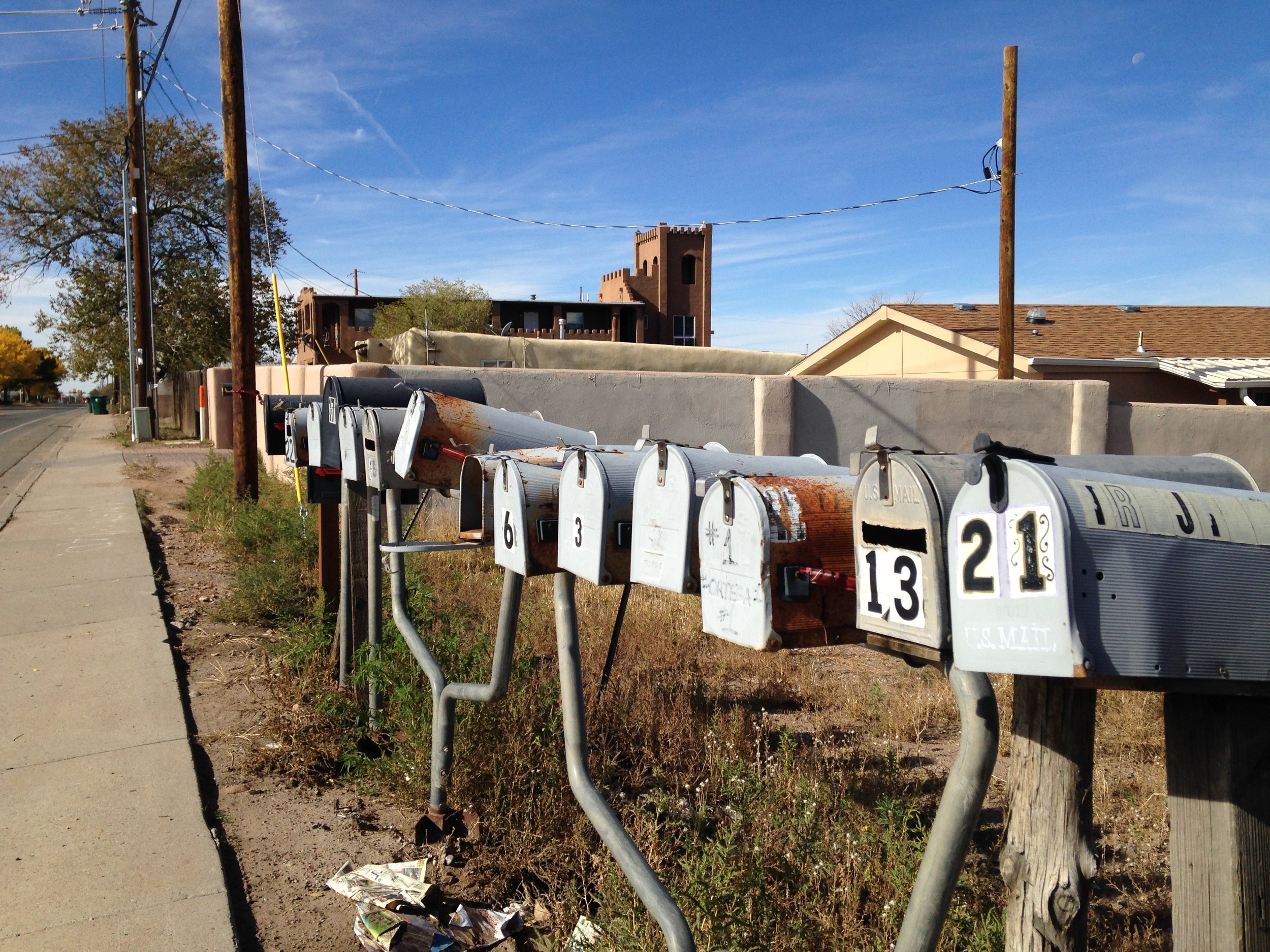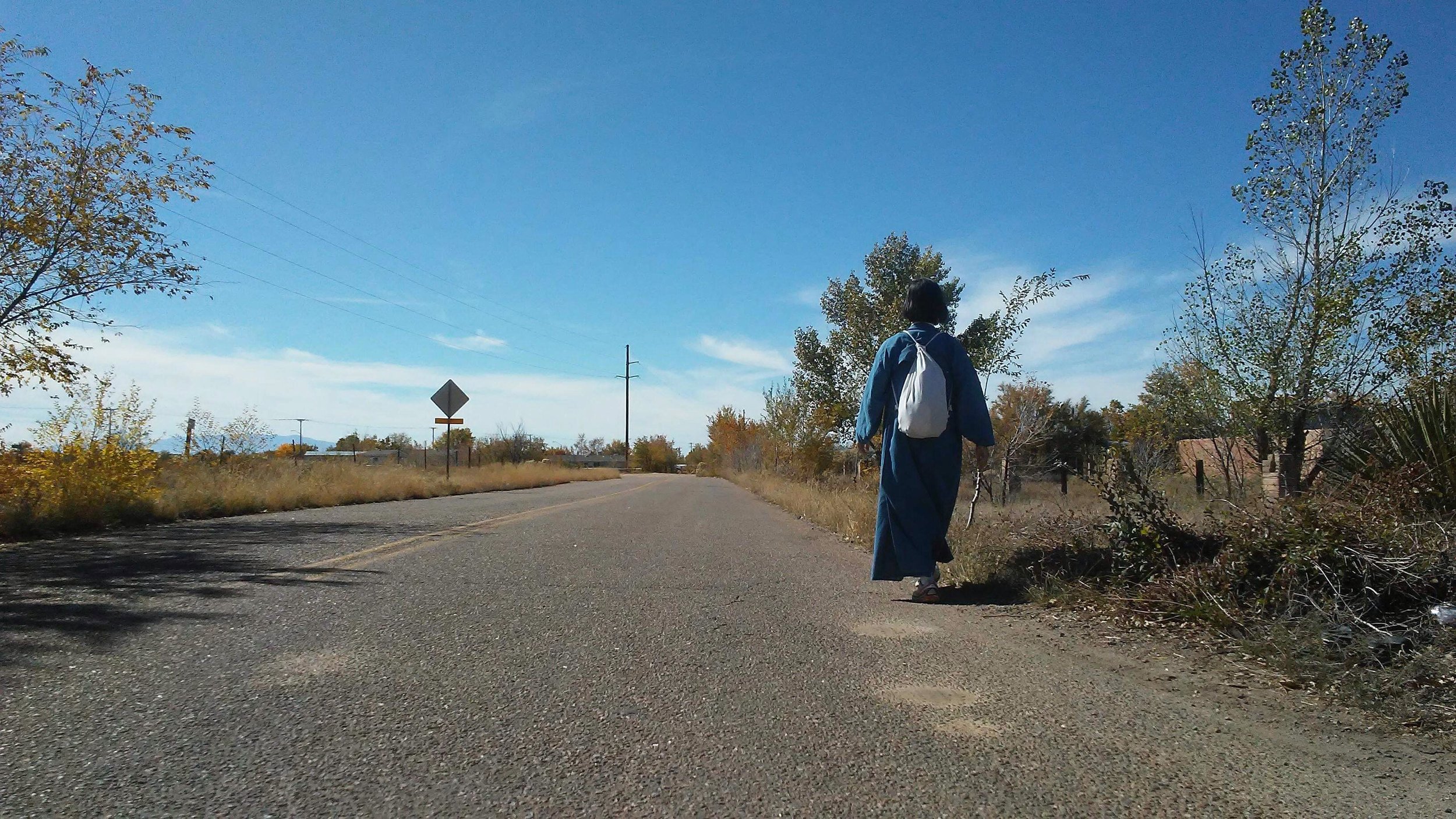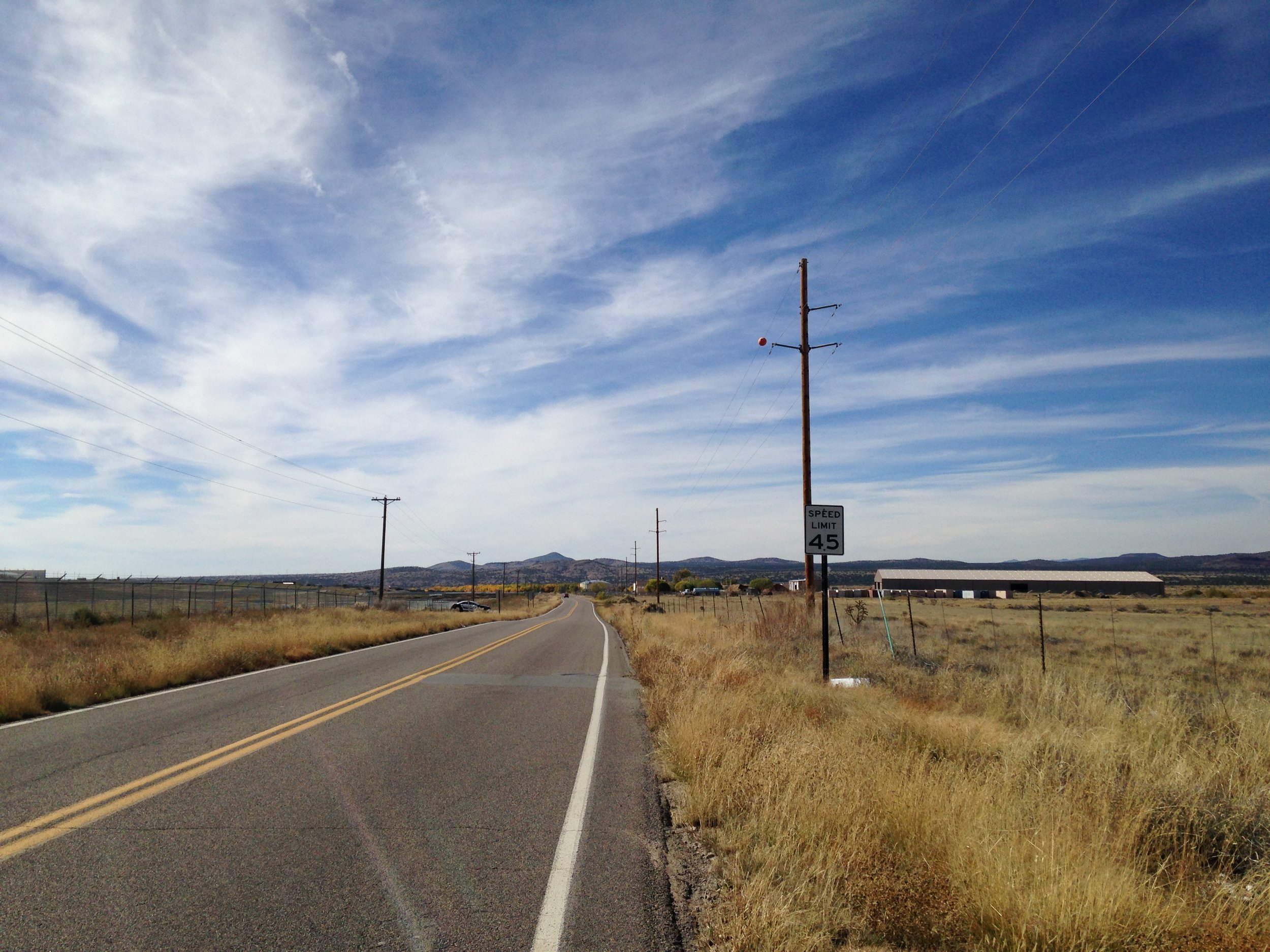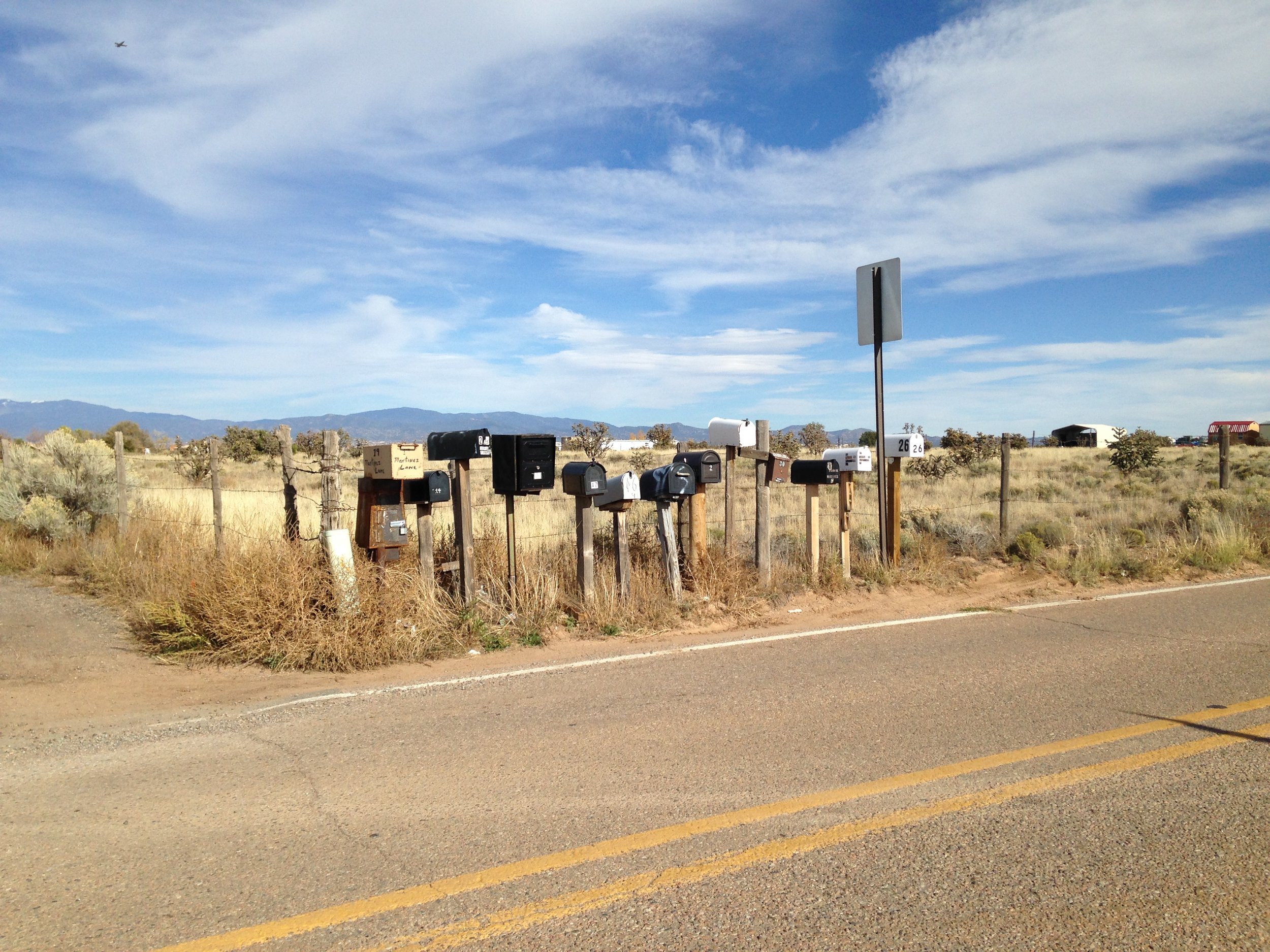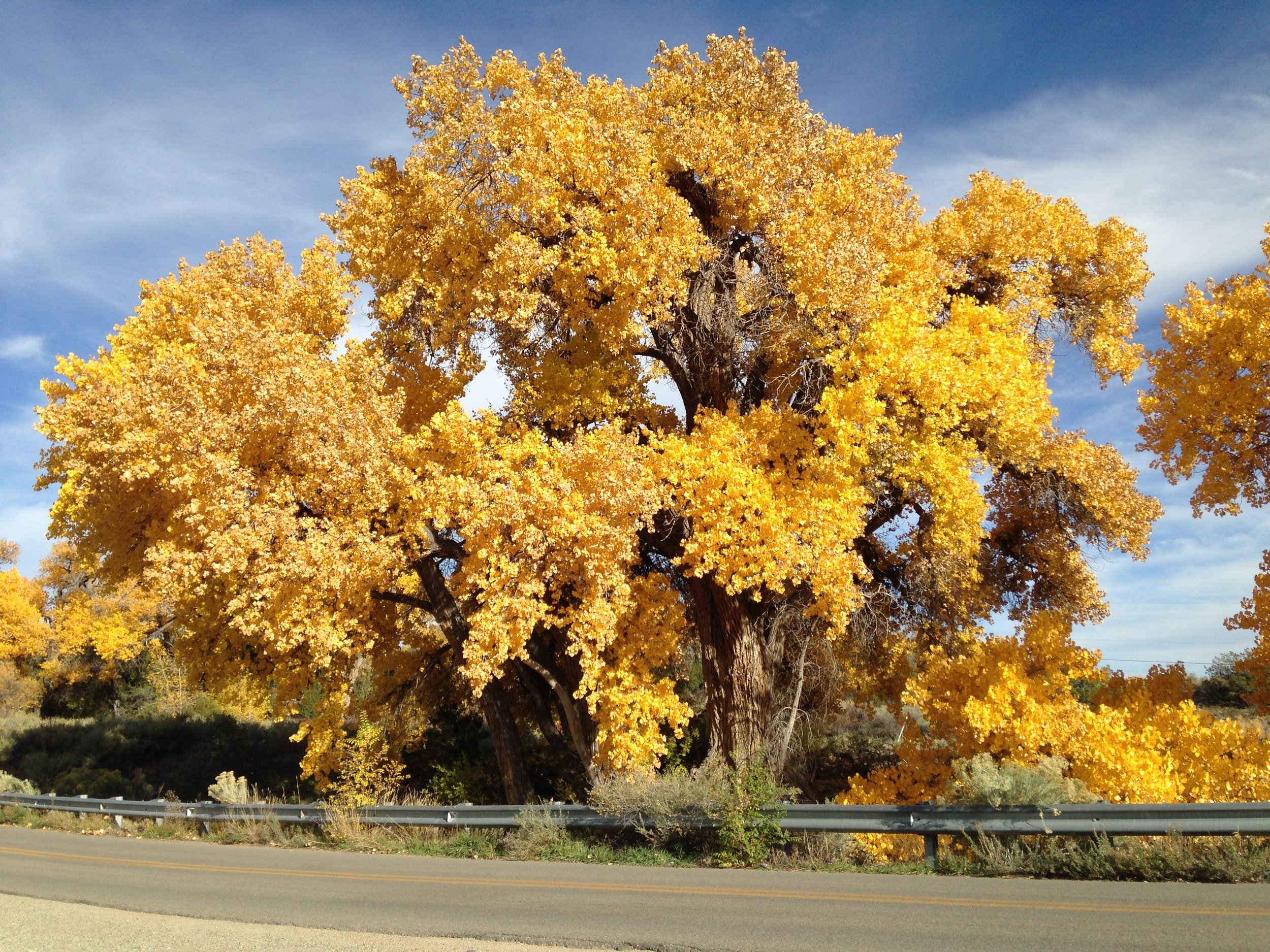El Camino Real de Tierra Adentro
October 29, 2018
Santa Fe Plaza to La Cienega, New Mexico
16 miles, 6.5 hours
“Added to the National Trails System in October 2000, El Camino Real de Tierra Adentro (Royal Road of the Interior) National Historic Trail (NHT) recognizes the primary route between the colonial Spanish capital of Mexico City and the Spanish provincial capitals at San Juan de Los Caballeros (1598-1600); San Gabriel (1600-1609); and then Santa Fe (1610-1821). The NHT, as designated, extends 404 miles from El Paso, Texas, to San Juan Pueblo, New Mexico.”
— National Park Service
El Camino Real was the first European road in North America, and for a century it was the longest. But the roads were there before the Spanish. Native people had created paths and traveled long distances to trade throughout the continent for centuries. Juan de Oñate and his group of settlers, priests, and cattle followed these trails in 1598 to Ohkay Owingeh just north of present-day Santa Fe, creating El Camino Real. The settlers went back south on the same road almost a century later when they were driven out by the Pueblo Indians in 1680. And then they came back the same way in 1692.
After New Spain became Mexico, it was the road that the U.S. army took from Santa Fe, which they had invaded and taken, south to the rest of Mexico. After the Mexican American War when New Mexico was now part of the U.S., the army built forts along El Camino Real to fight the Apache and Navajo. And it was also the road that the confederate army took in 1862 north from El Paso to fight and take possession of first Albuquerque and then Santa Fe.
“Today, the people of Santa Fe celebrate Vargas's peaceful re-entry into Santa Fe but his re-entry was anything but peaceful or bloodless…. The re-conquest of Santa Fe was not the end to Pueblo resistance, as many Pueblo peoples continued to resist the Spanish…. In the following one hundred and twenty-five years of Spanish rule most of the Pueblos were destroyed. A few remained in their original locations and some were eventually relocated or re-established. Today only nineteen of perhaps one hundred Pueblos prior to the Spanish conquest are still in existence. …
“After the defeat of Mexico in America's war against Mexico, and, in spite of the pledge for the protection of Spanish land grants to the Pueblos under the Treaty of Guadalupe Hidalgo, the Pueblo of Ohkay Owingeh, like all the Pueblos, began to experience wholesale encroachments by both local Spanish people and Anglos, which led to the loss of huge tracts of land. This was due in part to our inability to fully understand the American legal and tax system as well as the rationale of the U.S. government’s policies concerning individual land versus communal land ownership. We especially did not understand the American mindset of Manifest Destiny, which introduced unscrupulous land speculators and squatters onto our lands.”
— Storyteller Kaafedeh - Blowing Leaf (Herman Agoyo)
Sources:
National Park Service, New Mexico State Office, Bureau of Land Management, U.S. Department of the Interior. “Executive Summary, El Camino Real de Tierra Adentro National Historic Trail: Comprehensive Management Plan/ Final Environmental Impact Statement,” 2004.
Preston, Douglas. The Royal Road: El Camino Real from Mexico City to Santa Fe, 1998.
Storyteller Kaafedeh - Blowing Leaf (Herman Agoyo), “Ohkay Owingeh: New Mexico's First Capital This is Much of What I Believe, Know and Have Learned.” In White Shell Water Place: An Anthology of Native American Reflections on the 400th Anniversary of the Founding of Santa Fe, New Mexico, edited by F. Richard Sanchez, 2010.
https://www.nps.gov/elca/learn/historyculture/the-civil-war.htm
Some photos by Sarah Cohen and Lynnette Haozous.





